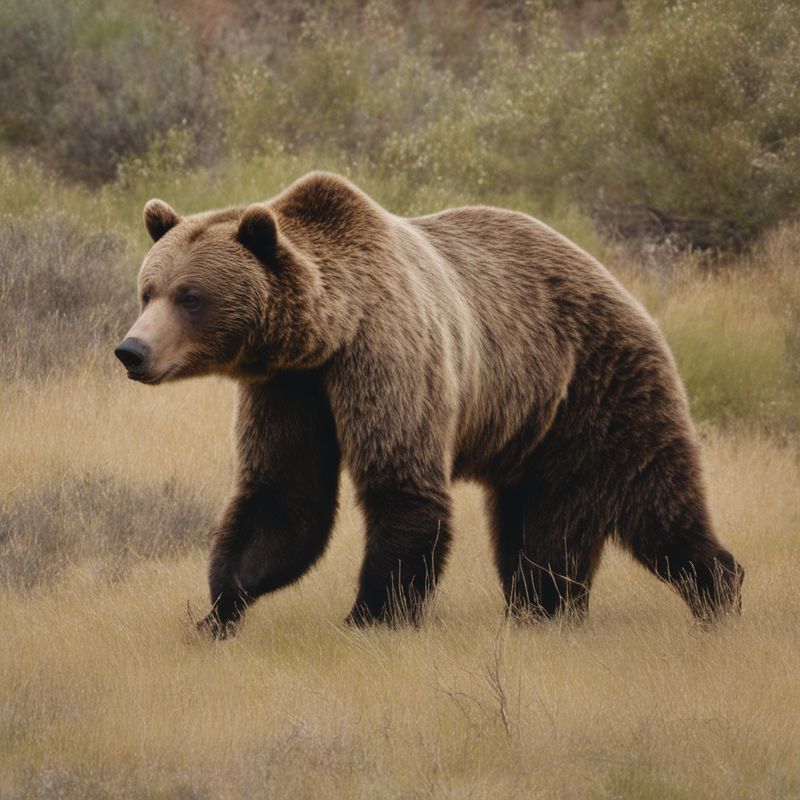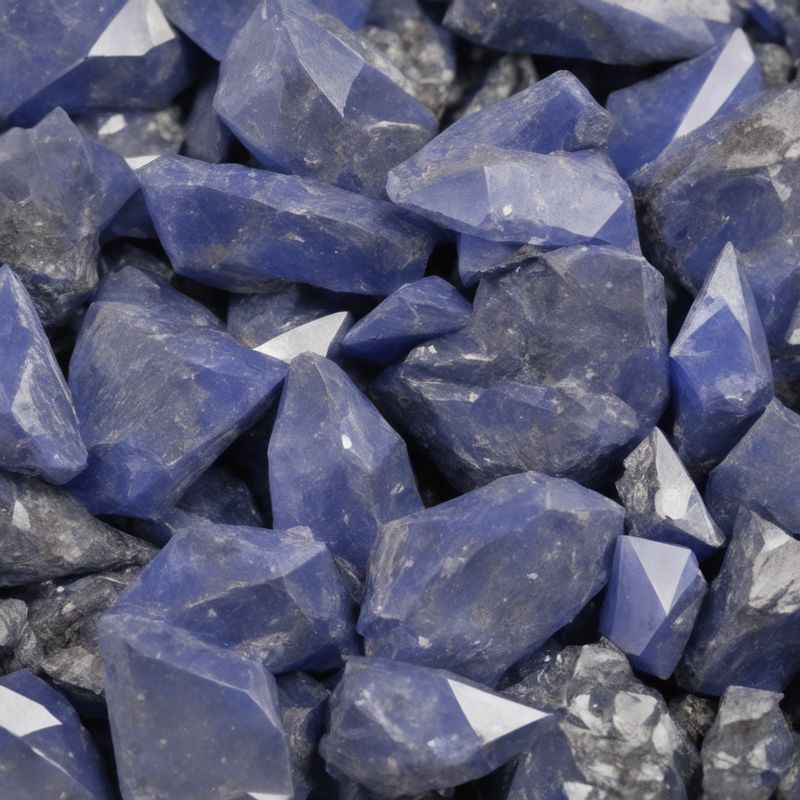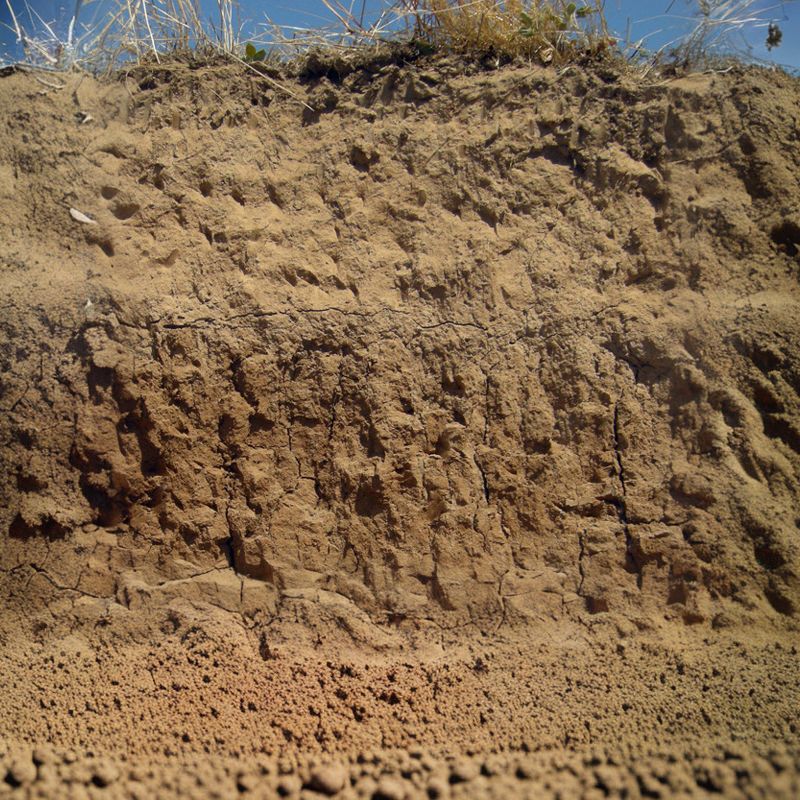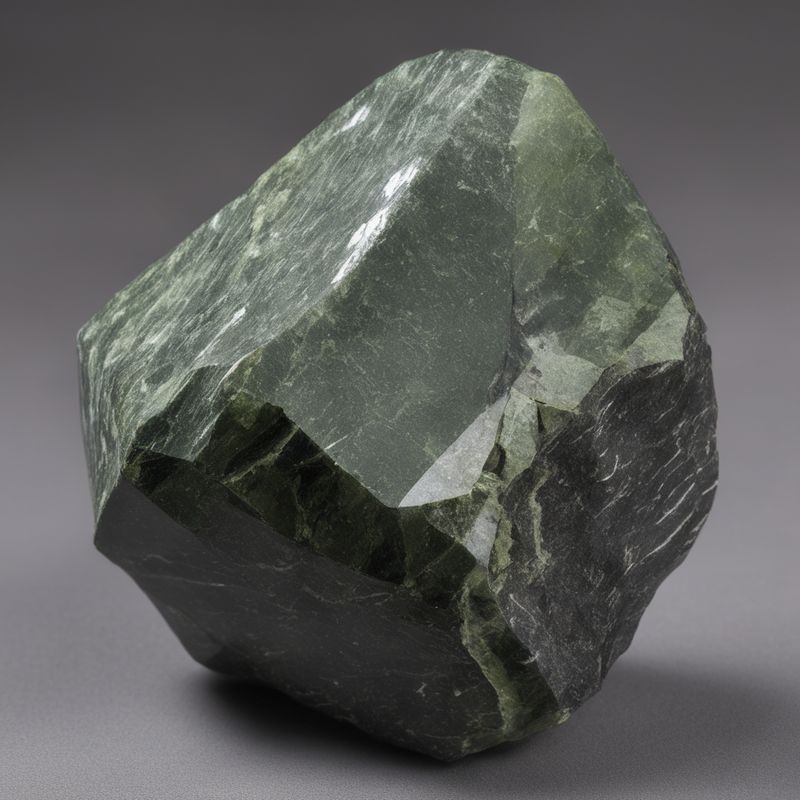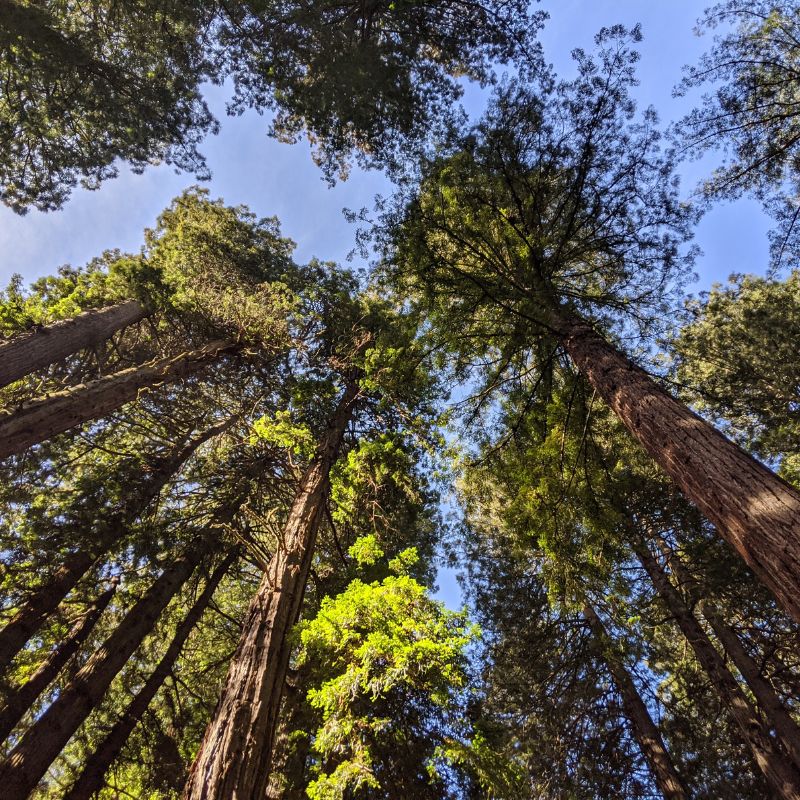Explore the Fascinating History of California
Take our California Trivia Questions for a Chance to Win a 6-Month Subscription to History By Mail!

The History of California
Journey Through California Trivia
Welcome to our California History and Trivia Page, proudly presented by History By Mail. Join us as we embark on a captivating journey through the past and cultural tapestry of the Golden State. From ancient indigenous civilizations to the Spanish colonial period and the modern era, we'll explore California's hidden treasures and challenge your knowledge with entertaining California trivia questions. Let's uncover the rich history and intriguing trivia about California together.
California, famously known as the Golden State, boasts an extraordinary history and diverse cultures. From the Native American tribes that have inhabited the region for thousands of years to the Spanish explorers who first set foot on its shores, California holds a fascinating legacy. With breathtaking landscapes like Yosemite National Park, iconic Pacific Coast beaches, and vibrant cities like Los Angeles and San Francisco, California showcases natural beauty, technological innovation, and a progressive spirit that has profoundly shaped its identity. Join us as we delve into the intriguing history and trivia questions about California.
Facts about California
State Abbreviation: CA
Capital: Sacramento
Name Origin: The name California comes from a 16th-century Spanish novel that describes a mythical paradise called California.
Nickname: Golden State
Statehood: September 9, 1850 (31st State)
State Motto: Eureka (I have found it)
California's Flag
The California state flag, officially adopted in 1911, features a bold and iconic design on a field of white. In the upper left corner, a red star stands prominently, representing California's status as the lone star of the West. Below the star, a wide red stripe stretches horizontally across the flag, symbolizing courage and valor. The remainder of the flag is a vibrant and vibrant field of white, representing purity and innocence. The California state flag is a proud symbol of the state's history, values, and rich cultural heritage. It serves as a reminder of California's enduring spirit of independence, its diverse population, and its significant contributions to the nation. The flag's striking design captures the essence of California and evokes a sense of pride and unity among its residents.
California's Great Seal
The California State Seal, adopted in 1849, features a round design that encapsulates the state's rich symbolism and heritage. At the center of the seal, a vibrant image depicts Minerva, the Roman goddess of wisdom and war, representing California's pursuit of knowledge and readiness to defend its values. Minerva is shown alongside a California grizzly bear, a powerful symbol of strength and independence. Surrounding the central image are various elements representing California's diverse industries, including agriculture, mining, and commerce. The motto "Eureka," meaning "I have found it," appears on a banner beneath the seal, signifying the state's optimism and discovery. This distinguished state seal serves as a proud emblem of California's history, ideals, and the indomitable spirit of its people.
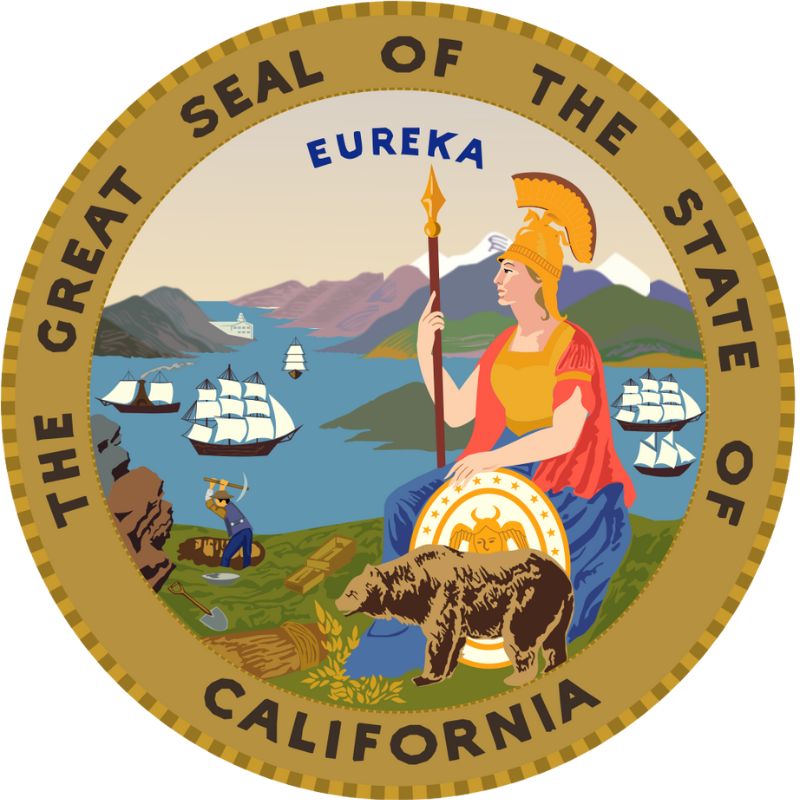
--- State Trivia #1 ---
History of California
The first Europeans to explore California were the Spanish, led by Juan Rodríguez Cabrillo in 1542. However, it was not until 1769 that the first Spanish mission, located in San Diego, was established. California became a part of the United States in 1848 as a result of the Treaty of Guadalupe Hidalgo, which ended the Mexican-American War. The discovery of gold at Sutter's Mill by James W. Marshall on January 24, 1848, sparked the California Gold Rush, attracting a large influx of settlers to the state. By 1964, California had surpassed New York to become the most populous state. One contributing factor to this growth is the significant number of immigrants who choose to settle in California, with more than one-third of the nation's total immigrants arriving in the state by 1994. Asians and Pacific Islanders have been particularly prominent in this influx.
California's leading industries include agriculture, manufacturing (transportation equipment, machinery, and electronic equipment), biotechnology, aerospace-defense, and tourism. The state boasts abundant natural resources such as timber, petroleum, cement, and natural gas.
Noteworthy geographical features of California include Death Valley in the southeast, which sits 282 feet below sea level, making it the lowest point in the nation. Mount Whitney, standing at 14,491 feet, holds the distinction of being the highest point in the contiguous 48 states. Lassen Peak is one of two active U.S. volcanoes outside of Alaska and Hawaii, with its last eruptions recorded in 1917.
California offers a host of attractions for visitors, including Yosemite National Park, Disneyland, Hollywood, the Golden Gate Bridge, Sequoia National Park, San Simeon State Park, and Point Reyes National Seashore.
Nearly two decades after California passed the "Save Our State" initiative, which denied public, social, educational, and health services to undocumented immigrants, Governor Jerry Brown signed a bill in 2011 that granted access to state-funded financial aid for undocumented college students. This bill was the second part of a two-part legislation known as the "Dream Act."
State Symbols
Fun Facts
- California’s Death Valley is North America’s hottest desert, with an average daily high in the month of June of 115.5°F. Tank up before you drive there. Gas stations can be 50 miles apart.
- The world’s biggest tree by volume is General Sherman, a giant sequoia tree in Sequoia National Park. It’s 102 feet around—that’s bigger than a basketball court—and may be as many as 2,700 years old.
- More movies have been filmed in California than any other state.
- Waves that reach over 50 feet high attract surfers to the state. In 1955, Disneyland opened in Anaheim, California. Since then about 750 million people have visited the park.
--- State Trivia #2 ---

Things To Do in California
- Visit the stunning coastline: California is renowned for its picturesque coastline, offering a range of activities. Explore the iconic beaches of Southern California, such as Venice Beach or Santa Monica Pier, where you can soak up the sun, enjoy beach sports, or take a leisurely bike ride along the boardwalk. For a different experience, head to the rugged shores of Northern California's Big Sur, where dramatic cliffs meet the crashing waves of the Pacific Ocean.
- Explore the natural wonders of Yosemite National Park: Located in the Sierra Nevada Mountains, Yosemite National Park is a must-visit destination for nature enthusiasts. Marvel at the breathtaking granite cliffs of El Capitan and Half Dome, hike through pristine wilderness to see iconic landmarks like Yosemite Falls or Glacier Point, and immerse yourself in the park's serene beauty. Whether you choose to camp, hike, or simply enjoy a scenic drive, Yosemite offers unforgettable experiences for outdoor lovers.
- Discover the vibrant city life in San Francisco: Known for its diverse culture and iconic landmarks, San Francisco offers a vibrant urban experience. Take a walk across the iconic Golden Gate Bridge, ride a historic cable car up the city's steep hills, and explore popular neighborhoods like Fisherman's Wharf, Chinatown, and the Mission District. Don't miss visiting Alcatraz Island, where you can take a tour of the infamous former prison and learn about its intriguing history.
- Enjoy wine tasting in Napa Valley: California's renowned wine country, Napa Valley, is a haven for wine enthusiasts. Embark on a wine-tasting adventure, visiting the numerous vineyards and wineries that dot the scenic landscape. Take guided tours, sample exquisite wines, and savor gourmet cuisine at the region's many acclaimed restaurants. The picturesque vineyards, rolling hills, and charming towns make Napa Valley a delightful destination for relaxation and indulgence.
- Experience the magic of Disneyland: Located in Anaheim, Disneyland is a world-famous theme park that offers enchanting experiences for visitors of all ages. Immerse yourself in the whimsical world of Disney characters, thrilling rides, and captivating shows. Explore the original Disneyland Park, which is divided into themed lands like Fantasyland, Tomorrowland, and Adventureland. Additionally, you can also visit Disney California Adventure Park, which features attractions inspired by Pixar movies and California's rich history.
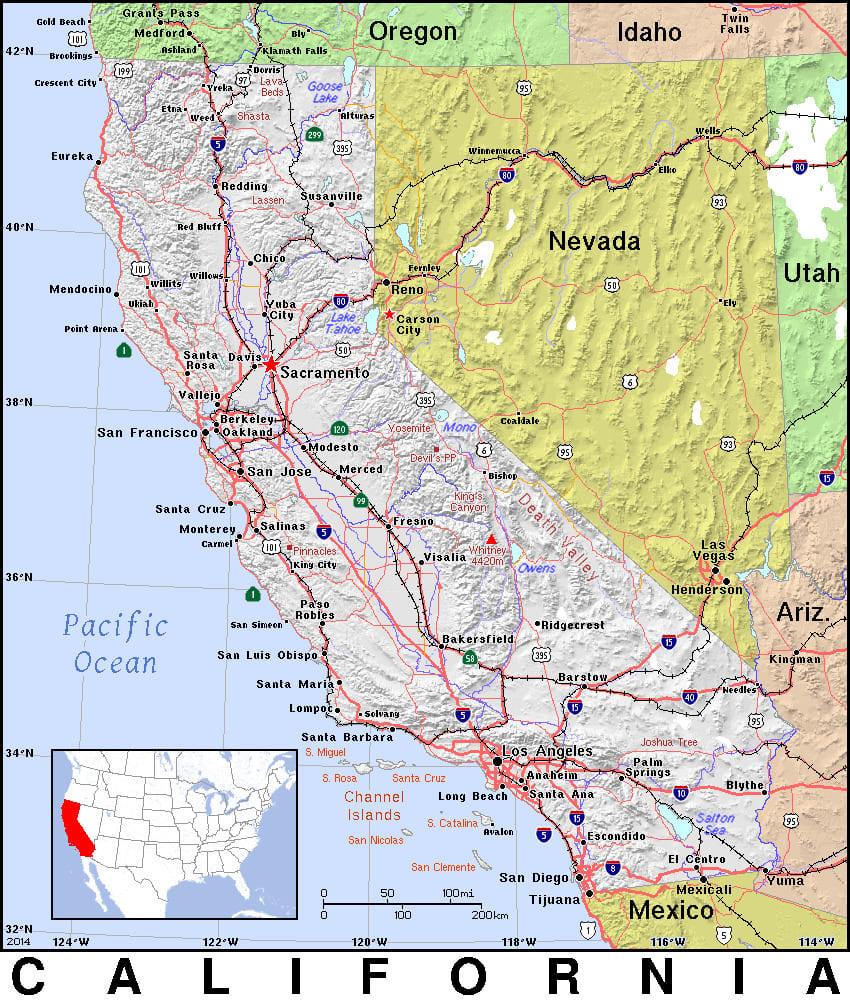
General Map of California
California, known as "The Golden State," is located on the west coast of the United States. It offers a diverse range of attractions and activities that cater to every interest. From stunning coastal landscapes to towering mountain ranges and bustling cities, California has something for everyone.
Famous People From California
--- State Trivia #3 ---
FREQUENTLY ASKED QUESTIONS (FAQ) ABOUT CALIFORNIA
California was admitted to the Union as the 31st state on September 9, 1850. It was a crucial addition to the United States, as it expanded the nation's territory and played a significant role in the westward expansion.
Following the Mexican-American War (1846-1848), Mexico ceded California to the United States under the terms of the Treaty of Guadalupe Hidalgo, signed on February 2, 1848. This transfer of territory marked the end of Mexican rule in California and set the stage for its statehood.
California's name can be traced back to the Spanish exploration of the region. The name "California" was first used by Spanish conquistadors and derives from the popular 1510 Spanish novel "Las Sergas de Esplandián" by Garci Rodríguez de Montalvo, which described a mythical island called California.
California played a limited role in the American Civil War (1861-1865) as it was geographically distant from the main theaters of conflict. However, it provided troops, resources, and financial support to the Union cause. The state's population boom, fueled by the Gold Rush, contributed to the Union's strength.
Related Resources
- Official Website of the State of California: The official website provides information about the state government, services, news, and resources. Visit: https://www.ca.gov/
- Visit California: Discover California's attractions, events, outdoor activities, and plan your trip to the Golden State. Visit: https://www.visitcalifornia.com/
- California State Parks: Explore California's diverse state parks, including Redwood National and State Parks, Yosemite National Park, Joshua Tree National Park, and more. Visit: https://www.parks.ca.gov/
- California Historical Society: Learn about California's fascinating history, exhibitions, research resources, and educational programs. Visit: https://www.californiahistoricalsociety.org/
- California Department of Fish and Wildlife: Discover California's wildlife, conservation efforts, hunting and fishing opportunities, and outdoor recreation. Visit: https://wildlife.ca.gov/
- California Wine Institute: Explore California's renowned wine regions, wineries, and learn about the state's vibrant wine industry. Visit: https://www.discovercaliforniawines.com/
- California State Railroad Museum: Dive into California's railroad history and visit the California State Railroad Museum in Sacramento. Visit: https://www.californiarailroad.museum/
- California Academy of Sciences: Experience the wonders of science, nature, and the environment at the California Academy of Sciences in San Francisco. Visit: https://www.calacademy.org/
- California Arts Council: Learn about the arts in California, including grants, programs, and initiatives supporting artistic and cultural organizations. Visit: http://www.arts.ca.gov/
- California State Library: Access a wide range of resources, books, and digital collections at the California State Library. Visit: https://www.library.ca.gov/

